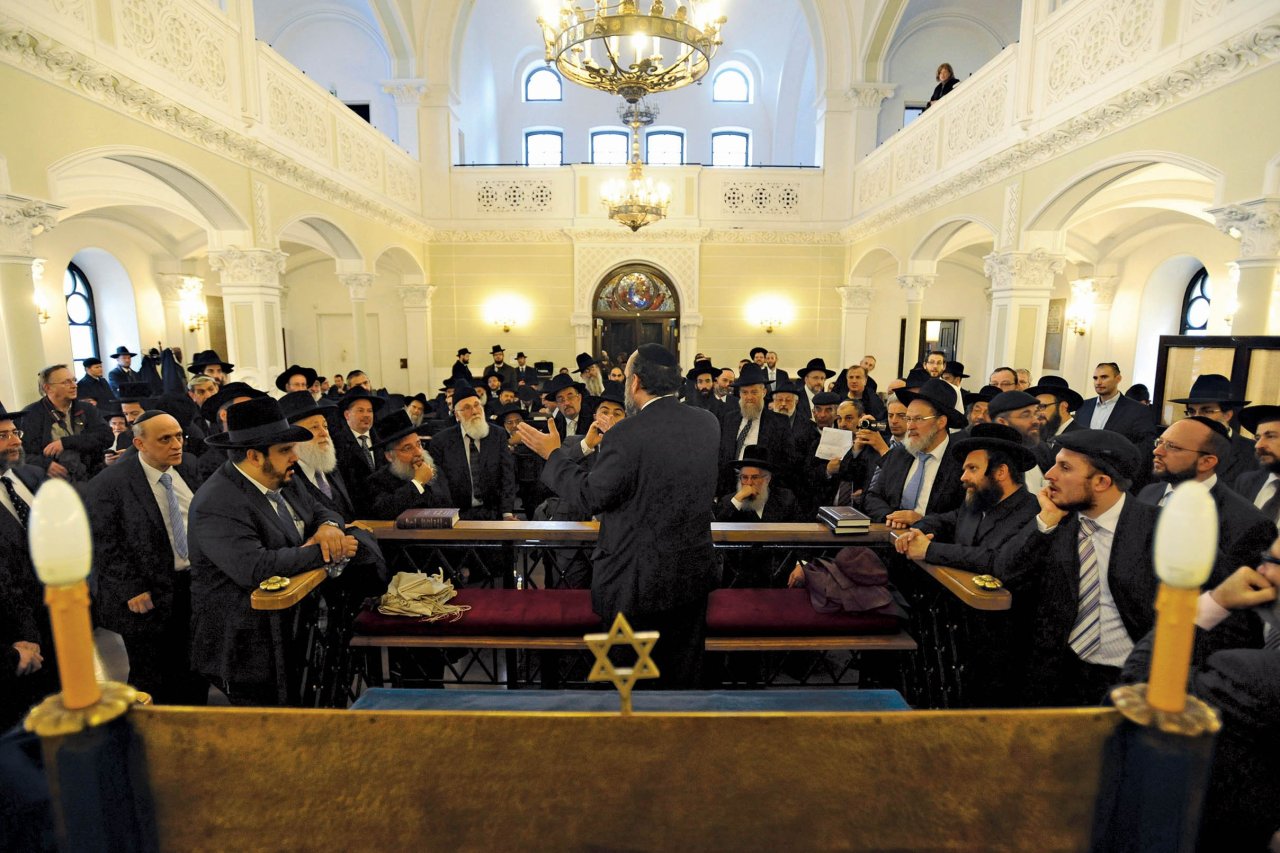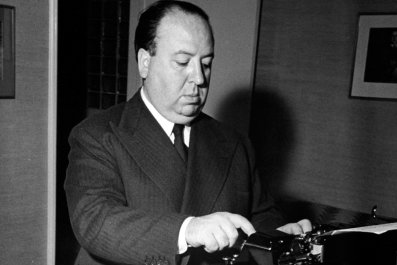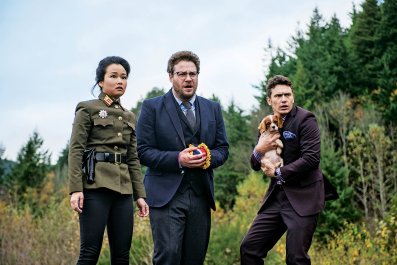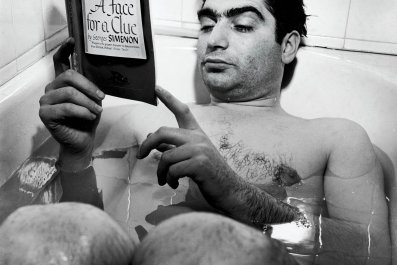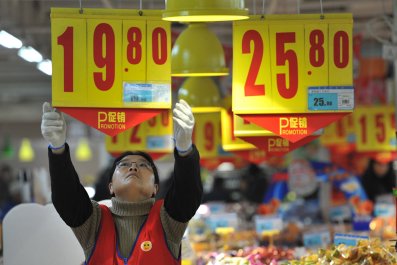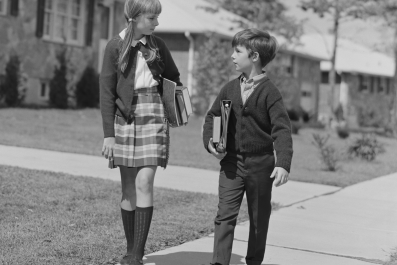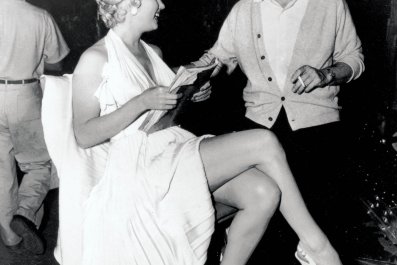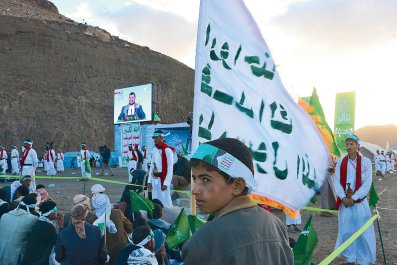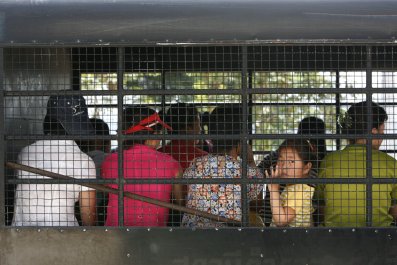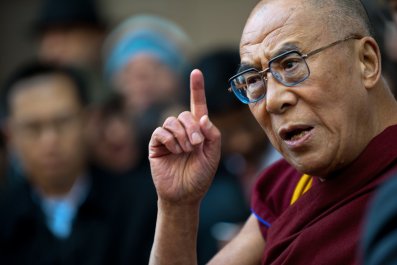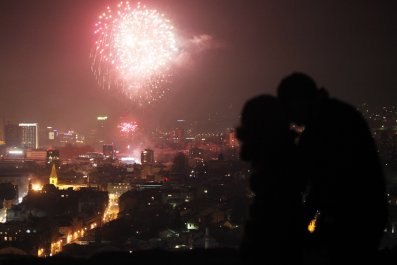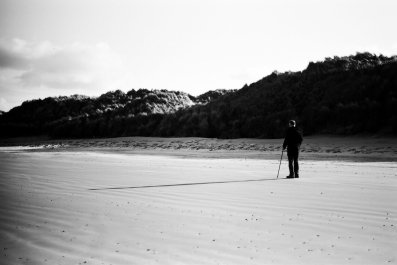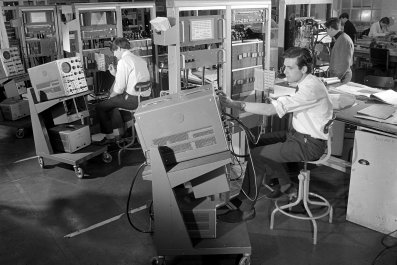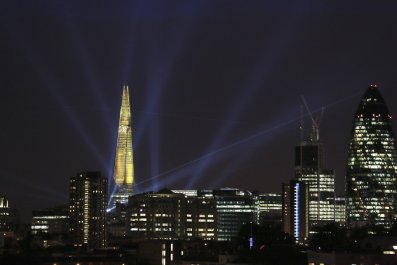Paweł Bramson grew up in a white, Catholic country, and he liked it that way. As a teenager in Warsaw, he despised the rare Arab and African immigrants who were starting to settle in Poland in the 1990s. He and his friends, their heads shaved to the skin, used to chase them around, sometimes beating them up. Once, they threw burning objects through the windows of a dormitory to scare the Arab students living there. He also knew that he and his pals despised Jews, even though he'd never encountered one.
"There were no Jews," he says. "Nobody ever saw them."
That's because for past few decades, Poland has been an ethnically and religiously homogeneous country—according to the 2011 census, 97.7 percent of the population is ethnically Polish. But it hasn't always been that way. Hundreds of thousands of Jews lived in Warsaw before World War II, and nearly 3 million lived in Poland—the largest such population in Europe. Bleak estimates suggest fewer than 50,000 survived the Holocaust.
The Communist regime that came to power under Soviet leadership after World War II was intolerant of religion and campaigned against the new Israeli state. The underground opposition movement against the Communist government, called Solidarity, wasn't much better: It did not allow Jews to have leadership roles because it feared a backlash. By 1969, almost all of Poland's Jews had either fled or assimilated. Even after the fall of Communism, the wordJewish carried a stigma: During Poland's first-ever presidential campaign in 1990, a front-runner candidate was falsely accused of hiding Jewish roots, and lost.
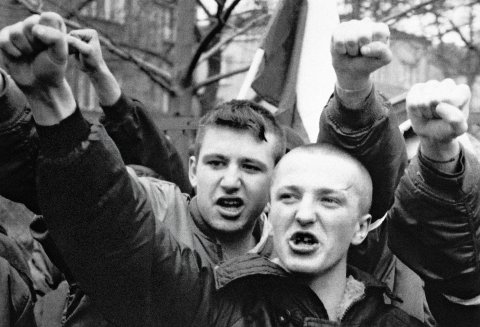
Around that time, Bramson, then 18, married his high school sweetheart, Ola. Like 90 percent of Poles, both Ola and Bramson were Catholic. Or so they thought.
In 1996, Ola came home from a genealogy archive with a pile of documents. She'd gone to learn about her ancestry, but she'd also done some research about her husband's. Among the documents was a copy of the Bramson family tree, which went back to 1835. Paweł's grandparents had lived in the southeast of Poland, near Ukraine, and according to the documents, they were Jewish.
Bramson, then 21, didn't believe it. He took the papers to his parents, thinking they would assure him these weren't any grandparents of his. But they only confirmed his fears. Though both were raised Jewish, Bramson's parents hid their identity because they feared anti-Semitism. "I was angry. I was outraged. I was also disappointed," he says, through a translator. He says his memory of that time is foggy because he bought some vodka and drank for an entire week.
He might have ignored the discovery, but, remarkably, Ola found Jewish roots in her family tree, too. She went through similar shock and confusion, and emerged with the desire to learn more about the religion she had come from. And she wanted Paweł to join her. They talked, he sobered up, and they talked some more. For six months, he did nothing.
Then they went to the synagogue.
A Pole First
Outside of Europe, Jews still sometimes call Poland the Old Country, a place where villages were once built around synagogues, and where you could find a Yiddish newspaper and a kosher butcher on nearly every corner. Memories of the Old Country, however, are tightly entwined with the trauma of the Holocaust. Treblinka, where nearly a million Jews died during World War II, is less than an hour from Warsaw. Auschwitz is an hour from Krakow. Dozens of tourism companies will take you to the death camps—but you'd be hard-pressed to find a tour of living, thriving Jewish Poland.
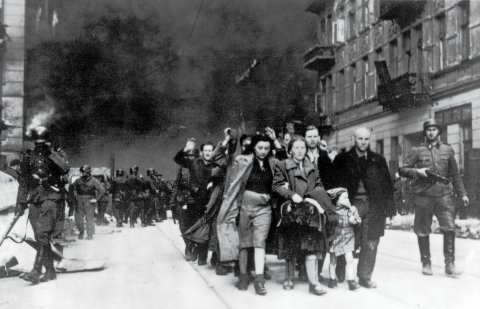
Slowly, that's changing. Poland's first Jewish Community Center opened in Krakow in 2008. Another such center, this time in Warsaw, was inaugurated in 2013. A year later, the opening of the starkly elegant Museum of the History of Polish Jews made international headlines. By focusing on Jewish culture and social history, rather than just World War II, the museum emphasizes that there's more to Jewish life in Poland than the Holocaust.
Severyn Ashkenazy, who was born in Poland in 1936, survived the Holocaust and founded the Friends of Jewish Renewal in Poland, recently argued that his country might be the safest place for Jews in contemporary Europe. It's a plausible claim, given the recent displays of anti-Semitic violence in France, which is home to the world's third-largest Jewish population. At the same time, several recent polls suggest that at least half of all Poles believe Jews have too much influence in finance and the media. That's a very high number, comparable to poll results in countries with robust right-wing movements like Austria, Hungary and Spain.
The oldest synagogue in Warsaw sits squarely in the middle of the city, tucked in between office buildings and skyscrapers that offer a little seclusion from surrounding car horns and sirens. Nożyk Synagogue symbolizes both the long history of the Old Country and the reinvigoration of a new Jewish Poland. It's a modest building, made of old stone and brick, but it stood through the German and Russian shellings and demolition campaigns of World War II that destroyed 85 percent of the city.

These days, a few hundred Orthodox Jews worship at Nożyk. Konstanty Gebert, a member of the synagogue who works as a journalist and activist, remembers just how thin the Jewish community was worn under the Communist government. In 1967, Israel fought a war with its Arab neighbors, and the Soviet Union sharply criticized Israel. Poland, dependent on Soviet support, followed suit. Polish politicians equated Jewish roots with support of Israel and launched a countrywide "anti-Zionist" campaign. "Organized Polish Jewry practically ends in 1968," Gebert says. Those who stayed were Poles first and Jews second.
In the early '60s, Adam Szyc attended Jewish summer youth camp and winter camp too. At home, his mother used to prepare homemade challah and gefilte fish. "I remember I was a member of a choir," he says, smiling and stroking a peppery beard. Today, Szyc is a shopkeeper who laughs a lot and presides over his shop counter like it's a lectern.
When I ask Szyc about 1968, though, he pauses for a long time to collect himself. He switches from lighthearted English to quiet Polish. "It was the most emotional time in my life," he says. That year, Poland forced Jews to leave the country or renounce their religion, along with any ties to Israel. Tens of thousands emigrated, including almost everyone Szyc knew, and numerous Jewish institutions, like cultural clubs and summer camps, were shut down. As Gebert puts it, the Jewish community "had a kind of skeleton existence after that."
Szyc's family stayed because making a living seemed more important than religious practice. His parents had survived World War II by hiding out in Russia, at the brink of starvation, and had returned to a city devastated by some of the war's worst fighting. So when Szyc's father found out he could support the family by making shoes in the new Poland, he told his son, "I have a flat. You can go to school. It's a good country." They stayed, even if it meant stifling their cultural identity.
Poland's restrictions on Jews started to lighten around 1980, as the grip of Communism weakened. Gebert says that small groups of Jews started meeting in private, to discuss faith and culture. He remembers attending one of those early meetings and seeing a man standing in the doorway, peering in at the two dozen men there. The man was weeping. Gebert asked him what was wrong. "I've never seen so many Jews in my life," the man replied.
The few hundred who now worship at Nożyk, then, represent progress. So does Adam Szyc's little store. It's attached to the synagogue and specializes in kosher food like his mother used to cook, along with frozen chickens, dill pickles and Israeli snacks. "It's enough to live, but not enough to live good live," says Szyc, smiling. "But, you know, at my age, OK." So what if the Israeli tourists rarely buy his overpriced Israeli snacks? He has plenty of repeat customers. One of them is Paweł Bramson.
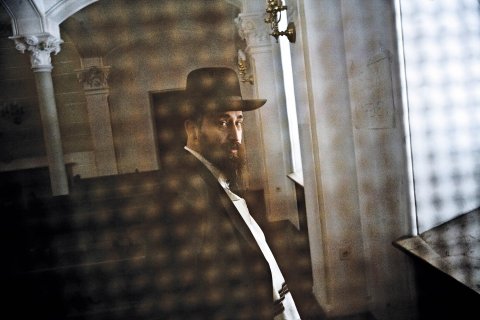
I Had Become My Own Enemy
Back in 2001, Bramson was sober but still confused, and afraid to talk to a rabbi. "Maybe some extreme emotions could awaken in me," he remembers worrying. "Maybe I could become aggressive. I was going to talk with an enemy. Even though I had already learned that I had become my own enemy."
The inside of Nożyk Synogogue is lined with dim corridors, old stairwells and an elegant central chamber that seats several hundred. When Bramson and his wife arrived, they sat down not with a Polish Jew but with an American rabbi named Michael Schudrich. He'd worked in Poland for most of the 1990s, and has been chief rabbi of Poland since 2004. When Schudrich speaks in English, you can hear New York City in his voice. He speaks like you might hope a rabbi would speak—almost improbably reassuring, always ready with a well-worn aphorism and a meaningful shrug
The meeting impressed Bramson. The rabbi was calm, composed and willing to tell the couple as much about Judaism as they wanted to hear.
There was a great historical irony to that first meeting. In the 19th century, long before the state of Israel was created, Poland was a world capital of Jewish scholarship. Young American men traveled there to study the Talmud under some of the world's best-known rabbis. But here was an American rabbi, explaining the finer points of kosher food preparation to a Jewish Pole.
"It was complicated," Bramson recalls. Prayer, rules, ritual. It was all strange and confusing: no meat with milk, no work on Saturdays, no women on the lower level of the synagogue during worship. He was like a soccer player at his first tennis match, wondering what the racquets were for and why there was a net across the center of the court. But he kept coming back.
Two Death Marches
In late 2013, Warsaw's first Jewish community center opened on a quiet residential street near the Old Town. It's a three-story building with big windows, long tables and bright, modern decor. On Sundays during its first summer, a different sort of Jewish community gathered here over challah, cucumber salad and potato casserole. The day I visit, at least a dozen 20-somethings, several atheists and some young mothers are in attendance. Outside in the sun, a few kids are spraying each other with water.

Two Jewish women, Agata Rakowiecka and Helise Lieberman, are telling me how much things have changed in recent years. Rakowiecka, a young Pole, runs the JCC. Lieberman, an American who's lived in Poland for two decades, directs the Taube Center for the Renewal of Jewish Life in Poland. Neither institution could have existed before Communism fell here.
Marian Turski, an 88-year-old who chairs the board of the Museum of the History of Polish Jews, is visiting the community center for the first time. "We try—we both, Jews and Gentiles—to fill up the vacuum which appeared after the Shoah," he says, using the Hebrew word for the Holocaust. Turski went to Auschwitz long before it was a tourist attraction—he was sent there in 1944 and survived two death marches. "We cannot cover [the vacuum] with people. But we can cover it with ideas, with imagination, with remembrance."
Twenty-five years have passed since Communism fell. In that time, Lieberman argues, a new and diverse group of Jews has emerged, one that doesn't overlap much with the attendees of Nożyk Synagogue. The community is growing. There aren't many children in attendance, but only because they're all at summer camp. Lieberman argues that this diversity marks a return to the past—it replicates the diversity of Jews in prewar Poland, which included casual Jews, Yiddish speakers, Hasids and atheists. "A to Z—anti-Zionist to Zionist," she says. Jews here try to overcome the burden of Poland's history, but at the same time, they embody it. "This is not the Old Country," she says.
'What the Hell Is This?'
Across from Nożyk Synagogue, there's a smaller building, with cracked paint and a courtyard. It houses a kosher restaurant on the second floor, which is where Paweł Bramson now works.
After learning about their Jewish roots, Bramson and his wife thought for months about what they should do. Bramson's mother cautioned him that conversion would be a bad idea—there was just so much anti-Semitism in Poland, she said. On the other hand, Paweł and Ola were thinking about the they hoped to have. "I couldn't imagine raising them without awareness of family history," said Paweł.
Bramson grew a beard and started wearing a yarmulke. He and Ola began attending synagogue regularly, and Paweł decided to learn how to prepare kosher food. He trained to be a kosher butcher, serving Jewish tourists who traveled through Warsaw.
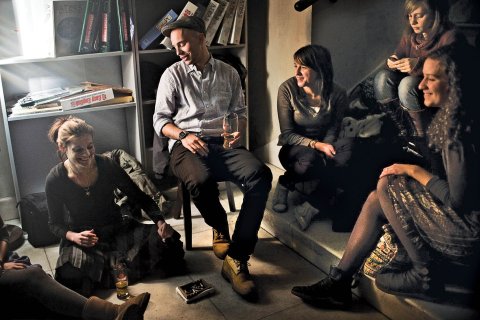
The complicated rules and rituals now seem second nature to him. Before meeting me in the bright sunlight in front of the restaurant, he was supervising a factory that produces kosher chocolate. He still likes the same soccer team, though, and he's even going to a game tonight. It must be an interesting sight: Bramson with his beard and yarmulke surrounded by proudly rowdy Poles.
There are other flashes of his old life. One day a couple of years ago, Bramson was walking in Warsaw. He had just finished his work and was wearing his yarmulke. As he rounded a corner, he saw a familiar, well-built man with a shaven head. They looked at each other. "Bramson?" the man asked. "Is that you? What the hell is this?"
It was an old friend he hadn't seen in over a dozen years, since the days of window breaking and nationalistic soccer chants. Bramson took a step back. "I was getting the feeling that it could get aggressive." Bramson had spent his youth creating fear; now he felt afraid.
But the feeling proved misplaced. "He just hugged me," Bramson says. The man asked how things were going. Then he explained: He'd seen Bramson in a TV documentary. Ever since Rabbi Schudrich encouraged him to share his story, Bramson has made regular appearances in the headlines.
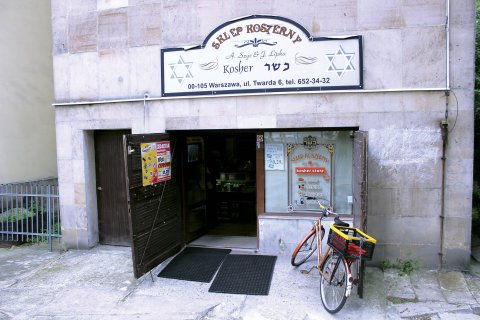
Word has gotten out. For Jews in Warsaw, the so-called "renewal" is by now old news. Agata Rakowiecka compares the Jewish community to a house that is quickly becoming a home. "In the beginning, you're excited about the curtains and the sofa," she says—you are amazed at the mere existence of the most basic things. Then, slowly, you start to figure out how to actually live in the house. "You start saying, This sofa is comfortable," says Rakowiecka. "This is good for reading."
In Poland, Rakowiecka and others were, at first, overwhelmed by the basics of a Jewish community: the weekly brunch at the community center, a Jewish summer camp for their sons and daughters to attend. Only now that they've settled in are they beginning to discover the real rhythms of their new lives.
Pawel and Ola have two children that they are raising Jewish; their teenaged son even spent time in America, studying at the Talmudic Academy of Baltimore. Some of Warsaw's best-attended Jewish institutions, meanwhile, are a kindergarten and a school, the sorts of places that create and perpetuate a small community like this one.
Poland's not the Old Country it once was, but a small community of Jews is creating a vibrant new home there. It's only when the carpets begin to wear thin and the stairs round out that you know you've really built something.
Krzysztof Ignaciuk worked as an interpreter on this story.
You can follow Daniel A. Gross on Twitter @readwriteradio.
This story was co-produced with Latterly magazine, an independent publisher of international storytelling.

Correction: A previous version of this article stated that Nożyk Synagogue was the oldest synagogue in Poland. It is actually the oldest synagogue in Waraw.



